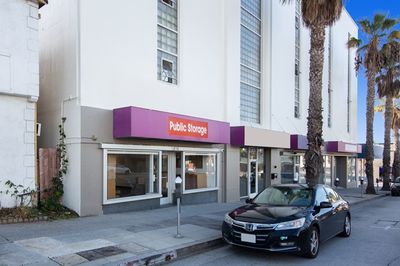Storage Types in Santa Monica
- Boat Storage Units in Santa Monica, CA
- Businesss Storage Units in Santa Monica, CA
- Vehicle Storage Units in Santa Monica, CA
- Climate Controlled Storage Units in Santa Monica, CA
- RV Storage Units in Santa Monica, CA
Other Storage Unit Options in Santa Monica, CA
Storage Unit Sizes in Santa Monica
- 5x5 Storage Units in Santa Monica, CA
- 5x10 Storage Units in Santa Monica, CA
- 5x15 Storage Units in Santa Monica, CA
- 10x10 Storage Units in Santa Monica, CA
- 10x15 Storage Units in Santa Monica, CA
- 10x20 Storage Units in Santa Monica, CA
- 10x25 Storage Units in Santa Monica, CA
- 10x30 Storage Units in Santa Monica, CA
About Santa Monica
Santa Monica is a popular beachfront city in Southern California, surrounded on three sides by the large metropolis of Los Angeles. TheSanta Monica Pier and Pacific Park are well-known destinations for both locals and tourists, as are the city's miles of sandy beaches. After a period of halted growth from 1980 to 2000, Santa Monica has again begun to attract new residents and businesses with its sunny climate and numerous amenities.
The History of Santa Monica
Santa Monica's history starts in much the same manner as many other areas of California, first serving as the home of the Gabrielino Native Americans. Spanish missionaries arrived on the West Coast and took over much of the land in Santa Monica, first creating missions and later secularizing and dividing the land into individual "ranchos". It wasn't until the late 19th century, however, that Santa Monica showed its first signs of individualism.
Mining entrepreneur Colonel Robert S. Baker and silver miner and senator John P. Jones are credited as the founders of this iconic city. They bought up land with the intention of creating an international port, thereby increasing their wealth considerably. After the purchase, they auctioned off plots of land to prospective residents, creating the first residential areas of the city.
Second Street served as the first commercial district in Santa Monica. The agricultural industry continued to flourish during this time, with many residents living on large ranches and raising cattle and other livestock or farming the land. However, the arrival of the railroad gave birth to new industries and resulted in a significant population surge. In the early 20th century, retail outlets and other commercial businesses exploded here, and film stars used Santa Monica as a vacation destination.
The Great Depression hit Santa Monica hard, as it did much of California. Previously lucrative businesses shuttered their doors and financial institutions filed bankruptcy. After World War II, Santa Monica began the slow recovery process. It's now a popular place for people to vacation, also serving as a home to people who love the close proximity to the water and the vibrant community.
Living in Santa Monica
Low pollution levels, blue skies and abundant sunshine characterize much of the year, providing the perfect conditions to spend time outdoors. With miles of open beaches, Santa Monica offers plenty of opportunities for swimming, surfing and sunbathing. The Santa Monica Pier is one of the area's most famous beach landmarks, dating back to 1909.
From restaurants and cafes to retail venues and gyms, you won't have to go far to find the businesses and facilities you need for everyday life. Numerous parks are distributed throughout Santa Monica, featuring open green spaces, playgrounds and picnic areas. There are three main shopping districts in the city, each offering a varied collection of retail shops. Downtown Santa Monica is home to a large, pedestrian-only shopping center where you can easily explore many small and large businesses. For upscale shopping, you can visit Montana Avenue, while Main Street has many small, eclectic boutiques and cafes.
Santa Monica Schools
The Santa Monica-Malibu Unified School District manages the city's public schools. There are a number of top-rated private schools in the area, including campuses that provide educational features such as one-to-one education, homework-free curricula and reduced class sizes. You can also enroll your child in one of the local parochial schools.
If you're considering working toward an associate degree or professional certificate, Santa Monica College is conveniently located within city limits.
Resources for Moving to Santa Monica
Here's some quick information to help you prepare for your move to Santa Monica:
- Utilities: Santa Monica Public Works manages residential water and sewer services. The city's central energy provider is Southern California Edison.
- Garbage and Recycling: The City of Santa Monica facilitates residential collection services for trash and recyclables.
- Transportation: Bus and light rail routes provide access in and around Santa Monica. The city also received several awards for its bike-friendly roads and recently introduced a bike-sharing program.
Santa Monica Housing
Because of its beachfront location and numerous attractions and amenities, Santa Monica is an extremely expensive place to live. The median home price is exponentially higher than both state and national averages, and homes in the area can cost as much as several million dollars. Rent is also very expensive, with even small studio apartments costing a few thousand dollars or more per month. However, the high cost of living is accompanied by the convenience of many amenities, proximity to the beach and excellent job prospects.



